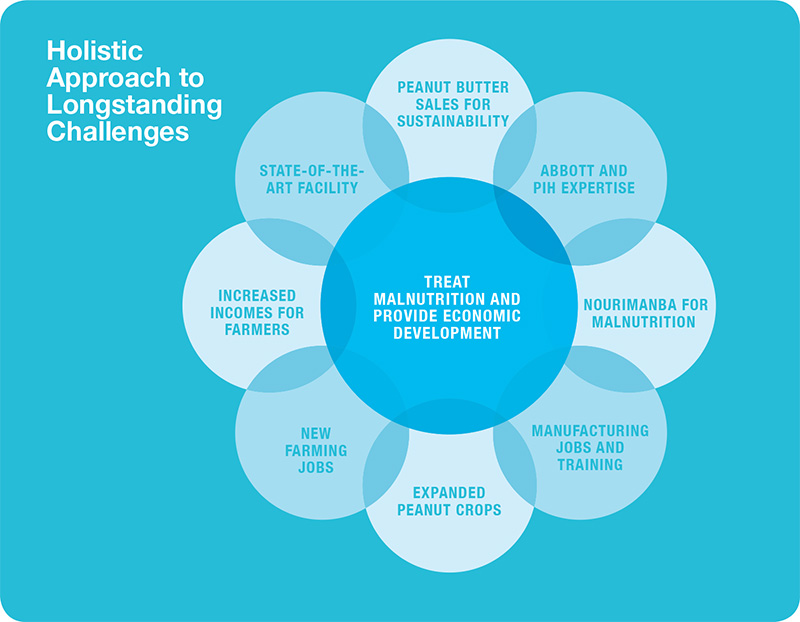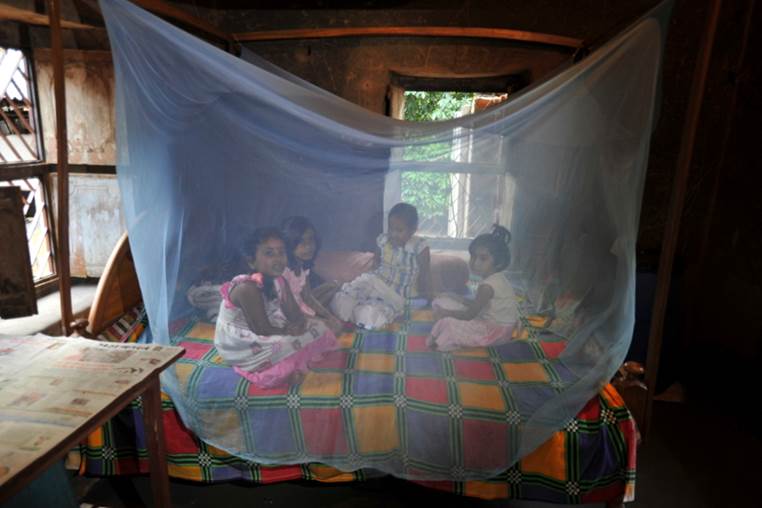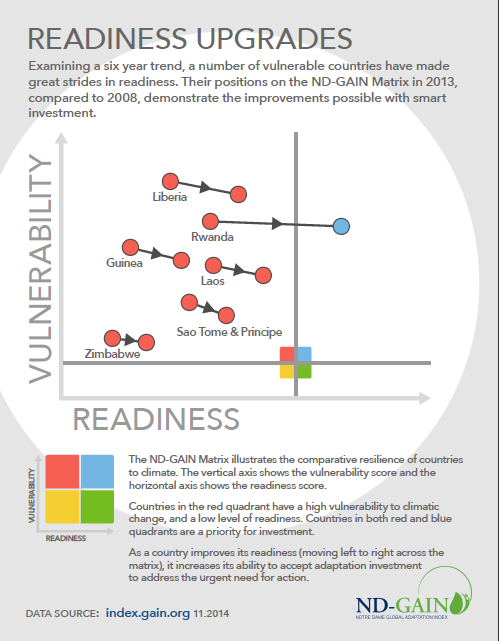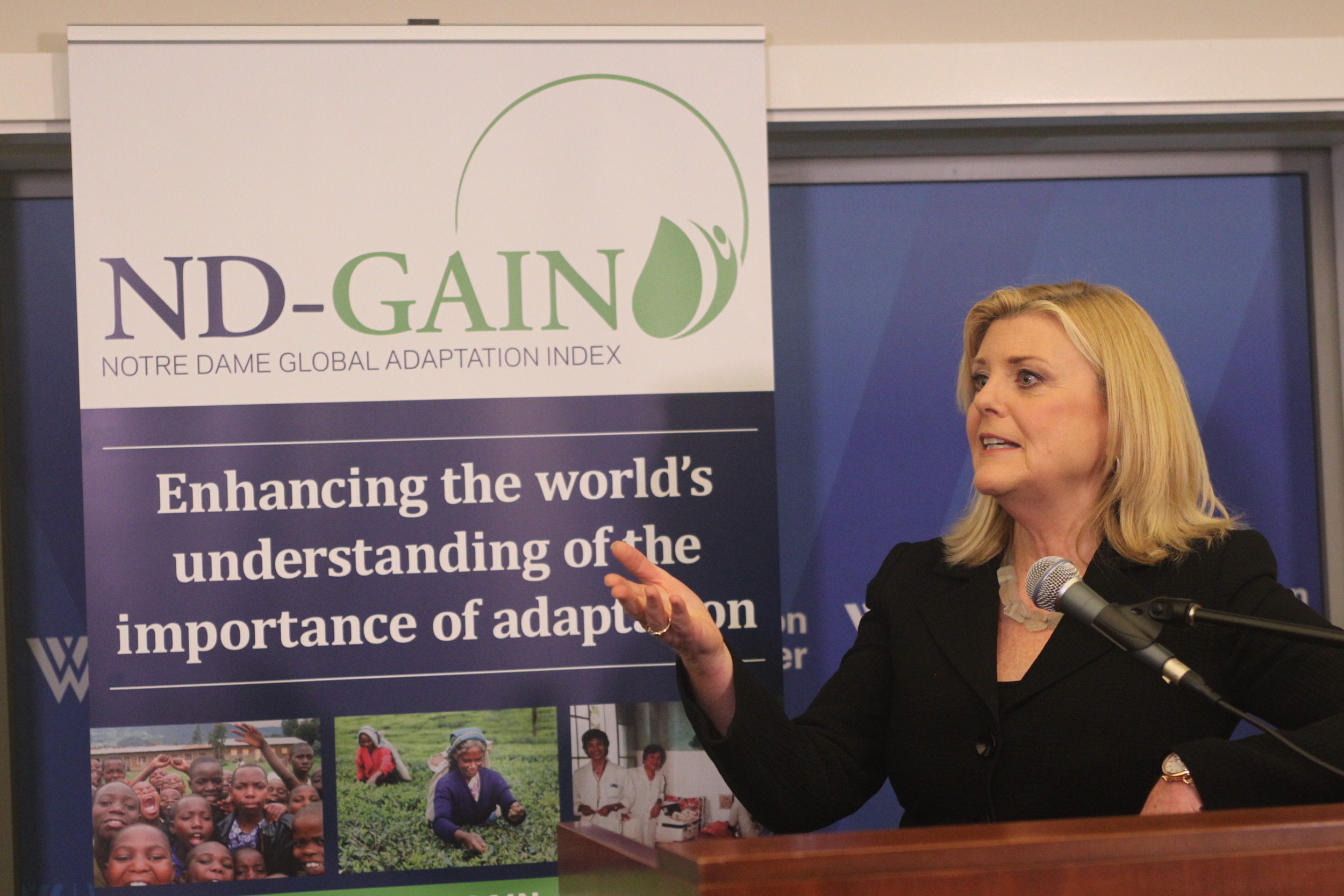This Op Ed originally appeared on May 4, 2016 http://ensia.com/voices/why-development-should-focus-on-climate-adaptation/

Just as climate change disproportionately affects the poor,
so must efforts to reduce its toll.
One of the biggest threats to a thriving world today is that the world’s poorest people face disproportionate risk from climate change. The World Bank’s Turn Down the Heat report notes that climate change threatens to erode progress made on reducing poverty, while a Stanford studyreveals that global incomes for 2100 could be 23 percent lower than they would be in a world without climate change. While it is sobering that over the past 30 years one dollar out of every three spent on development has been lost as a result of climate risk, the long-term impact of lower incomes relates to shrinking global markets and thus has impact on economies around the world.
For leaders working on development issues in least-developed and lower-income countries, these trends call for more resources to support climate adaptation, such as improving water security through conservation and modernizing infrastructure to withstand extreme storms.
A trifecta of global influence has identified adaptation as a key climate action strategy for national and local governments, the private sector, and donors: the Paris Climate Agreement, which mentions adaptation more frequently than mitigation; the U.N. Sustainable Development Goals, which prioritize adaptation; and Pope Francis’ encyclical on the environment, which calls out the imbalance between the global north and south in a climate-changed world.
In an average year, climate change affects more than one out of five people. Scientists from the Notre Dame Global Adaptation Index, a climate adaptation think tank I lead at the University of Notre Dame, have calculated that people living in the least-developed countries have 10 times greater chance of being affected by a climate disaster than those in wealthy countries. They also have calculated that it will take more than 100 years for lower-income countries to reach upper-income countries’ current level of capacity to adapt to changes in climate.
Climate change disproportionately harms the poor in wealthy countries, too.
Not only that, theIntergovernmental Panel on Climate Change reports that while climate change heavily burdens the poor, it also worsens preexisting poverty by exacerbating the effects of other poverty causes, such as loss or erosion of physical and financial assets, including land, housing and jobs. Take Africa as an example: In 2015 alone, the continent faced about 50 events that were influenced by climate change — such as droughts, wildfires, landslides, extreme temperatures and floods — as calculated by the International Disaster Database at the Centre for Research on the Epidemiology of Disasters. These events affected more than 20 million people, killed 1,139 and created damages amounting to more than US$2.5 billion. Such events and changes to historical trends are likely to worsen the symptoms of poverty. One likely outcome is decreased production of staple foods in many of the poorest regions — by up to 50 percent by 2020 in some African countries — increasing malnutrition and undernutrition, which currently cause 3.1 million deaths in children under five every year around the world.
Climate change disproportionately harms the poor in wealthy countries, too. Superstorm Sandy was one of the most expensive extreme weather events in history, costing corporations and governments more than US$40 billion. According to a report by Rutgers University, although registration for Federal Emergency Management Agency assistance by ALICE households (Asset Limited, Income Constrained, Employed, which means they are above the poverty line but still not financially stable) exceeded registrations by non-ALICE households by 13,000, FEMA provided US$61 million more to non-ALICE households. Of the homeowners who applied for assistance, only 10 percent of ALICE applicants had received relief by February 2013 as opposed to 26 percent of all household owner applicants. Even after this relief, disparities remain. While ALICE households received some other help — through public assistance, private insurance and nonprofits — as a group they’re still left with $2.2 billion worth of residential damage and lost income that’s likely to stay unrelieved.
With hazards and vulnerabilities in mind, leaders can create strategies that increase adaptive capacities, especially for those most sensitive to climate hazards, including the world’s poorest citizens.
Climate adaptation requires several basic steps. First, leaders in government, the private sector and philanthropy should examine the relative hazards based on climate models for areas relevant to their work. Then they should identify adaptive capacities that are lacking and creating the greatest risk based on those exposures. ND-GAIN can help, identifying which countries are most prepared — including resource constraints — to handle and adapt to global challenges brought about by climate disruption. Other helpful resources include the World Economic Forum’sGlobal Competitiveness Report, an assessment of the economic drivers of countries’ productivity and wealth, which helps determine viable markets for corporate investment in projects in other countries, and the World Resources Institute’sAqueduct, which identifies water risks around the world.

With hazards and vulnerabilities in mind, leaders can create strategies that increase adaptive capacities, especially for those most sensitive to climate hazards, including the world’s poorest citizens. Increasing access to electricity, water and sanitation and improving community health-care options are further examples of the dozens of adaptation actions available. Quickly, leaders will see that not only are there parts of their current efforts they can claim are adaptation — which will burnish their brand and inspire further effort — but there are numerous collateral benefits to adaptation: lifting more out of poverty, strengthening economies, preventing civil conflict, buttressing food security, protecting natural resources and ensuring a brighter future for generations to come.






 An edifying conversation with Tom Herbstein, programme manager for the
An edifying conversation with Tom Herbstein, programme manager for the  The
The 
 I enjoyed great conversations last week with delegates and speakers from around the world at the first Chicago Forum on Global Cities,
I enjoyed great conversations last week with delegates and speakers from around the world at the first Chicago Forum on Global Cities, 
 The Wednesday morning panel, Urban Day: Applying Technical Research and Tools in Developing Cities, focused on lessons learned from putting urban adaptation projects in place. A top-notch panel included John Furlow, USAID; Glen Anderson, Engility Corp.; Charles Cadwell, The Urban Institute; and
The Wednesday morning panel, Urban Day: Applying Technical Research and Tools in Developing Cities, focused on lessons learned from putting urban adaptation projects in place. A top-notch panel included John Furlow, USAID; Glen Anderson, Engility Corp.; Charles Cadwell, The Urban Institute; and 









